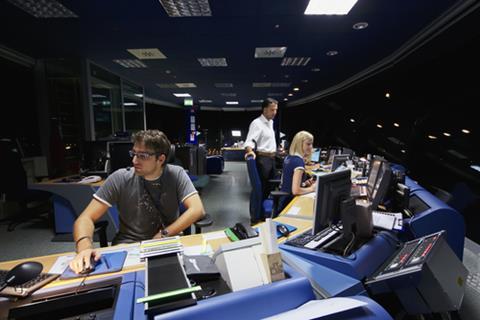Invisible to the travelling public, they are the calm and ever-alert custodians of the skies – ensuring aircraft navigate safely, efficiently, and smoothly from departure to destination.

However, when Covid-19 grounded the world’s airlines four years ago – and with it demand for air traffic control (ATC) services – air navigation service providers (ANSPs) were forced to curtail training activities. Fewer flights also meant less air traffic to adequately prepare new recruits while early-retirements saw the departure of many veteran controllers.
It was not a phenomenon unique to control towers. From cockpits to maintenance shops to engineering offices throughout the aerospace supply chain, the slowdown coupled with attrition of seasoned staff left the sector bereft of the skills to cope with a rapid rebound in traffic.
For ATS, the problem remains. IFATCA, the international federation of air traffic controller (ATC) associations, reports critical shortages of ATC professionals in many parts of the world, including the USA, where the Federal Aviation Administration recently said the nation was 3,000 controllers short.
With bulging airliner backlogs confirming traffic trends are only heading in one direction, air navigation service providers around the world are redoubling efforts to hire and train the new generation of air traffic service professionals.
Modern air traffic management systems can play a part in supporting workload, but automation can only go so far - skilled people are at the centre of one of the most safety critical areas of aviation. That is where retention, recruitment and – perhaps most critically – training come in.
While leading ANSPs have traditionally trained their staff in-house, more and more, the industry is now looking at how they can take advantage of external expertise to support these efforts, address the growing skills gap and, at the same time, introduce innovative and more efficient methods of instruction.
Enter CAE. The Canadian simulation and digital technologies specialist has long been a leader in training pilots and other aviation professionals in civilian aviation as well as military spheres across its global network of centres.
Earlier this year, the company signed a strategic agreement with NAV CANADA, the world’s second largest ANSP, to boost training capacity for air traffic controllers and flight service specialists. It is CAE’s first foray into the world of air traffic services training and one it hopes will lead to further opportunities.
The first classes will begin in the fall at a purpose-built ATC training centre on CAE’s Montreal campus. By 2028, the company will have provided overflow training to 500-plus personnel, allowing NAV CANADA to boost student intake by a half and reach target staffing levels much earlier than planned.
CAE will provide four- to six-month initial training, using NAV CANADA’s curriculum and courseware, after which students will undergo a combination of specialty training and on the job training led by NAV CANADA. NAV CANADA will also continue to offer its own initial training from seven schools across the country.
“The arrangement is a natural extension of CAE’s core mission to make the world a safer place and leverages the expertise of two Canadian industry leaders,” says Marie-Christine Cloutier, CAE’s vice-president, performance, strategy and marketing, who is spearheading the new line of business.
Although it is the first time CAE has offered ATS training, Cloutier is confident further doors will open internationally. These could range, she suggests, from providing consultancy or help with finding and training instructors to offering a comprehensive training solution.
“NAV CANADA is perceived as one of the leaders in the ANSP world, so our association with them is a huge springboard,” she says. “As a training organisation, CAE has a variety of solutions that we can tailored to an ANSP’s specific needs.”
One possibility is to harness CAE’s expertise in competency-based assessments, which is where pilot training is heading, maintains Cloutier. “A lot of ANSPs are looking at ways of condensing the training time with scheduling technologies and tools,” she says.
Other avenues could include cross-disciplinary training to bridge the gap between air traffic controllers and pilots; digitizing the training journey; and adopting advanced data analytics, such as a version of CAE’s proprietary CAERise system, to improve training outcomes.
With demand for air travel set to continue growing and a significant number of air traffic controllers approaching retirement, the the industry faces an ongoing need to attract new talent.
With its latest venture, CAE hopes to play a key role in addressing that global challenge by helping ANSPs develop the next generation of professionals who will ensure our airborne highways continue to flow unfettered long into the future.


























